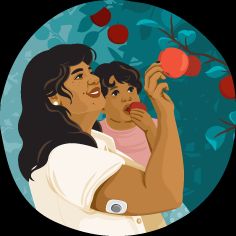It’s common for people with Paget disease of the breast to receive a diagnosis of eczema, which can delay diagnosis and treatment for breast cancer.
The look-alike symptoms of Paget disease and eczema of the breast make it hard to distinguish one from another. But there are ways to correctly diagnose and treat these very different conditions.
Paget disease of the breast is a rare type of breast cancer, representing only 0.5% to 5% of breast cancers. Other names are Paget disease of the nipple and mammary Paget disease.
Eczema is an inflammatory condition that can affect skin anywhere on the body, including the breasts. Eczema affects more than 31 million people in the United States. It’s also known as atopic dermatitis.
Keep reading to learn more about the difference between Paget disease and eczema of the breast, plus what you need to know about symptoms, treatment, and outlook for people with these conditions.
Language matters
In this article, we talk about the difference between Paget disease of the breast and eczema in people assigned female at birth.
It’s important to note that not everyone assigned female at birth identifies with the label “female.” However, at times we use “male” or “female” to reflect the language in a study or statistic or to make sure people can find this article with the terms they search.
When possible, we aim to be inclusive and create content that reflects the diversity of our readers.
Early symptoms of Paget disease may be similar to those of eczema, but there are key differences that could help determine the proper diagnosis.
Paget disease
Paget disease of the breast starts in the nipple and then spreads to the areola and breast skin. About 1 in 2 people with Paget disease of the breast have a lump behind the nipple.
Symptoms of Paget disease are described below:
| Initial symptoms | Advanced symptoms |
|---|---|
| • red, scaly rash on the nipple and areola | • flattened or retracted nipple |
| • small bumps on the nipple and sometimes the areola | • ulcerated nipple |
| • sore, inflamed skin | • bleeding from the nipple |
| • itching | • pain |
| • tingling or burning sensation | |
| • nipple discharge |
Eczema
Breast eczema is an inflammatory skin condition that can affect any part of the breast. Symptoms come and go and may include:
Paget disease vs. eczema of the breast
Shared symptoms
- skin rash that’s dry, rough, patchy, or scaly
- discoloration
- itching
Key differences
- Paget disease always affects the nipple, while eczema may affect the areola (circular area around the nipple) and the areas around the breast.
- Paget disease usually affects one breast while eczema is more likely to affect both.
Paget disease of the breast and eczema both cause discoloration, rash, and itchiness.
One difference between Paget disease and eczema is that Paget disease typically affects only one breast and eczema is more likely to affect both.
Another is that Paget disease always affects the nipple, while eczema may not. Eczema may affect the areola, as well as other areas of the breast and the areas between and beneath them.
This gallery provides pictures of both conditions.
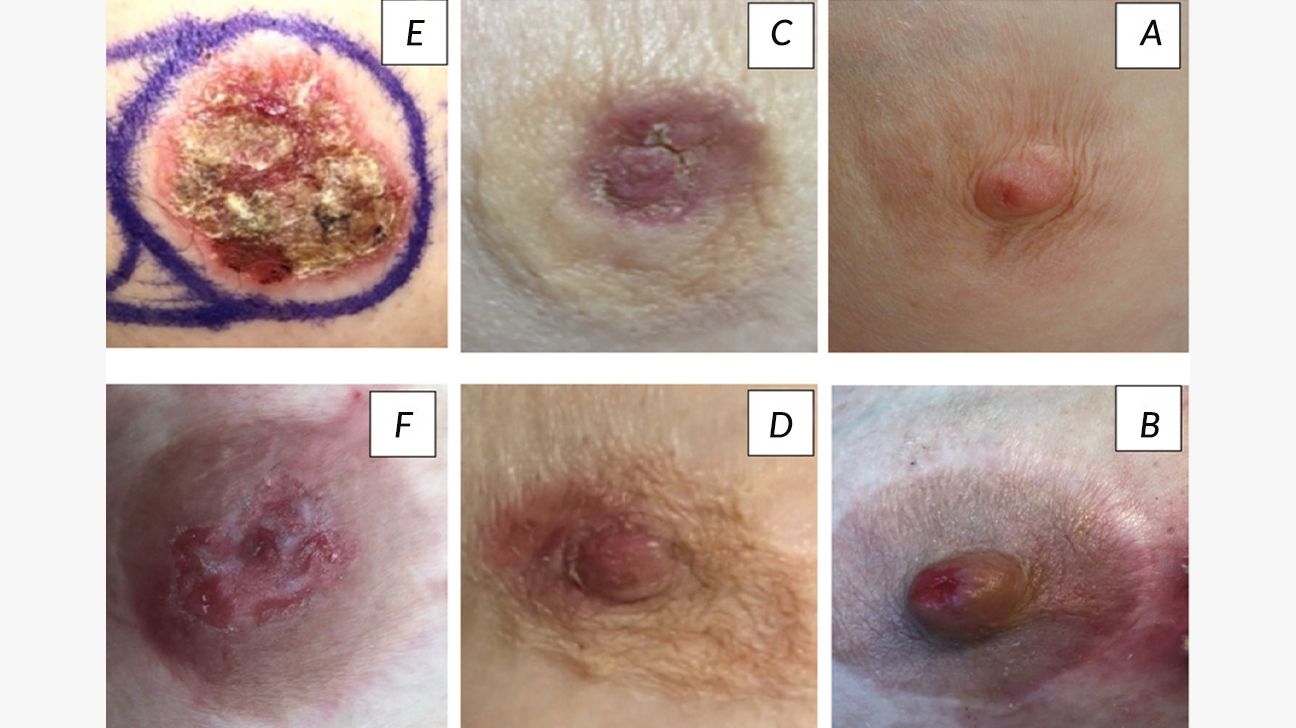
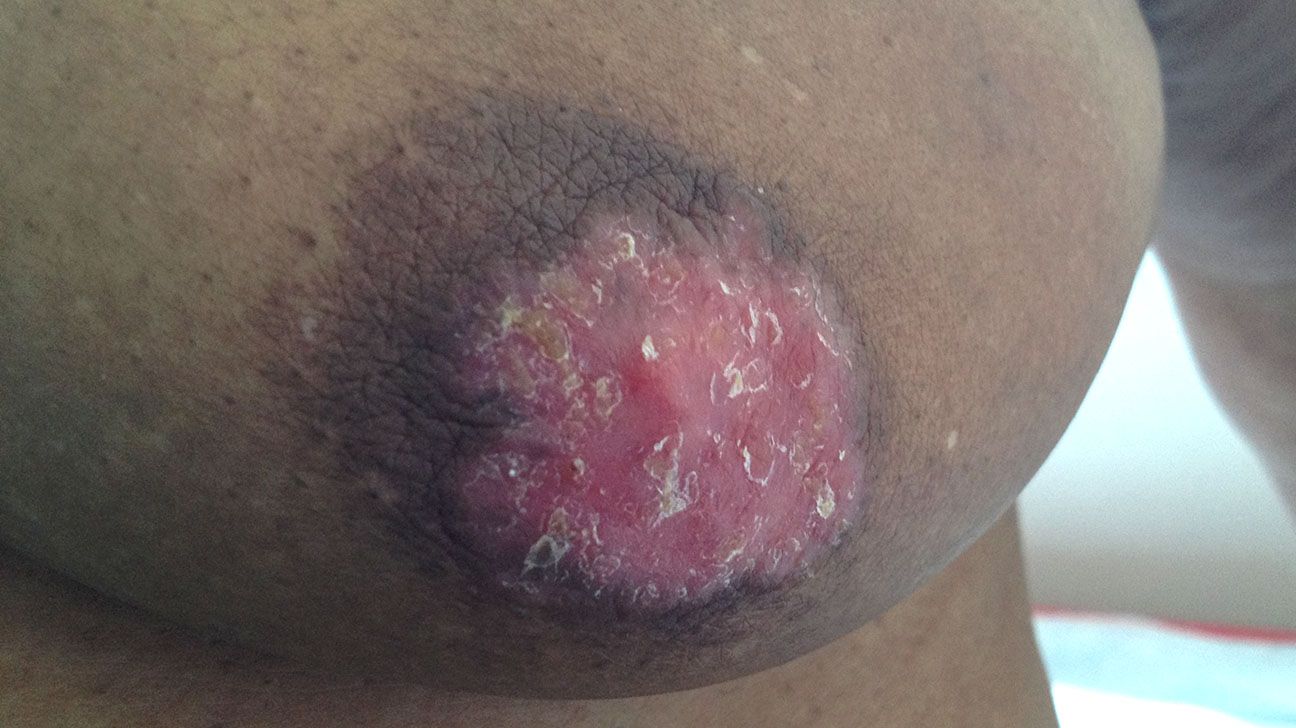
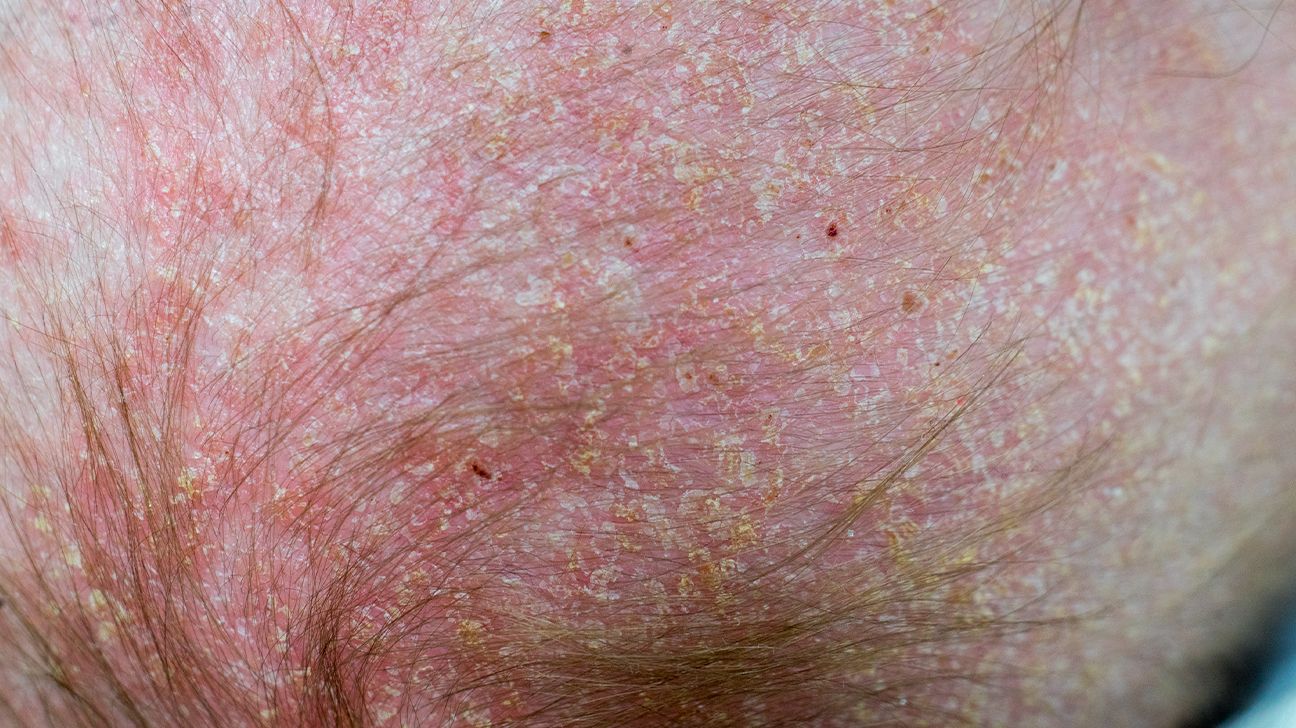
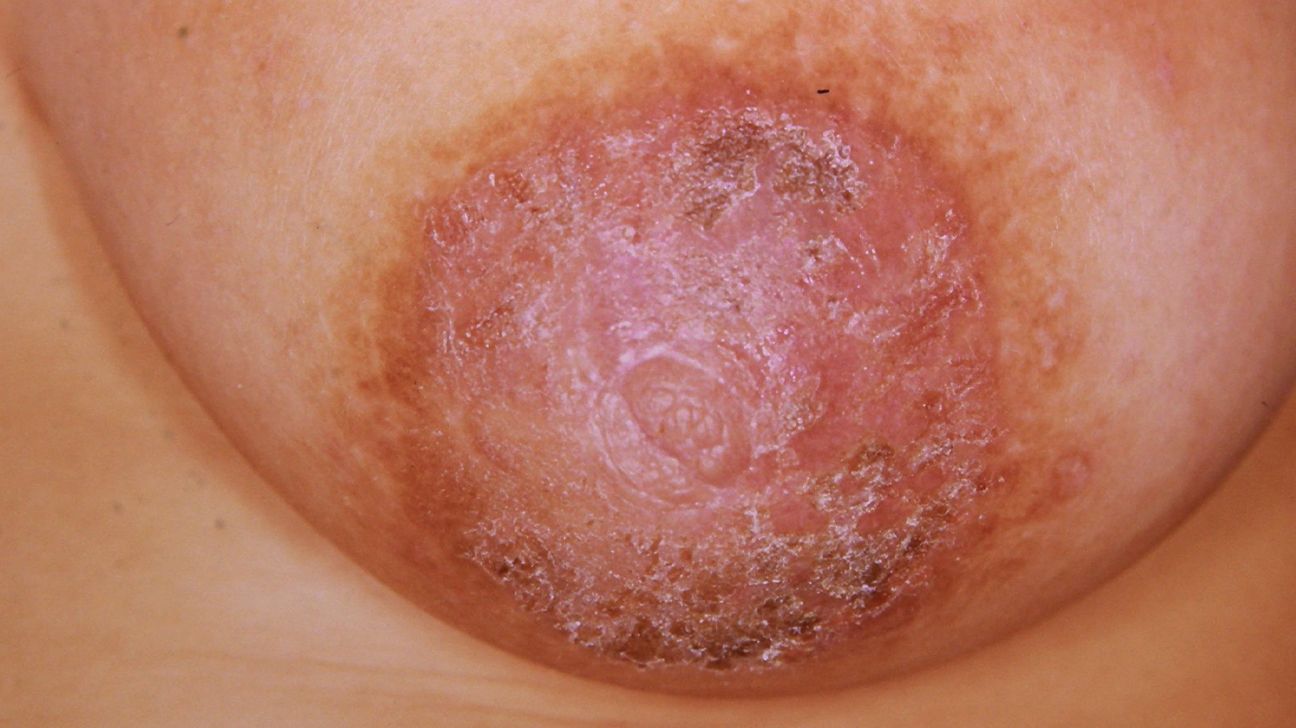
The exact cause of Paget disease and eczema of the breast isn’t fully understood. But researchers have identified several factors and theories that may contribute to the conditions.
Paget disease
The
A second theory is that Paget disease is a distinct, spontaneous process that starts in the outer layer of skin at the nipple.
Contributing factors may include:
- genetic abnormalities
- exposure to ultraviolet rays, certain chemicals, or radiation
- diet and stress
Eczema
Eczema refers to a group of inflammatory conditions that affect the skin. Breast eczema is usually a manifestation of atopic or contact dermatitis.
Although the exact cause is unknown,
Researchers have identified several risk factors that may contribute to both conditions of the breast.
Paget disease
Paget disease is usually diagnosed in females ages
Other risk factors for Paget disease of the breast
- mutations to BRCA1, BRCA2, and other genes associated with breast cancer
- high dose radiation exposure
- previous diagnosis of breast cancer
- being in postmenopause
- history of noncancerous (benign) conditions, such as breast atypia (changes in breast cells) or lobular carcinoma in situ
- having a first-degree relative with breast or ovarian cancer
- undergoing hormone replacement therapy, such as estrogen
- drinking alcohol
Eczema
Eczema is most commonly diagnosed between ages 2 months and 5 years, but breast eczema specifically usually affects females in their teens.
Eczema flare-ups usually happen when your immune system reacts to an irritant. Some potential triggers for breast eczema are:
- soaps and body washes
- powders and lotions
- fragrances
- laundry detergent and fabric softeners
- fabrics such as wool or polyester
- pooling of sweat around the breasts
- stress
Diagnosis is likely to start with a clinical exam and review of your medical history. A healthcare professional may want to discuss:
- specific symptoms, how long you’ve had them, and if this has happened before
- whether you have a rash anywhere else on your body
- what treatments you’ve tried, if any
- whether you’ve previously received an eczema diagnosis
- personal and family history of breast cancer
In most cases, a visual examination is enough to reach the diagnosis of eczema.
However, Paget disease of the breast is sometimes misdiagnosed as breast eczema because its early symptoms look like those of eczema. This can delay diagnosis and treatment for breast cancer.
If there’s any question about the diagnosis, further testing may
- skin biopsy
- imaging tests, such as mammography, breast ultrasound, or breast MRI
- breast biopsy
Treatment for both conditions may depend on the severity of your symptoms and the progression of the condition.
Paget disease
Rarely, Paget disease of the breast involves just the skin. But about 9 in 10 cases involve ductal carcinoma in situ (DCIS) or invasive breast cancer.
The main treatment is surgery, including:
Other treatments may include:
Eczema
Depending on the extent and severity of eczema, treatment may include:
- moisturizing creams
- over-the-counter or prescription topical medications, including corticosteroids
- light therapy
- immunosuppressants
- injectable biologics
Other ways to manage disease flare-ups are:
- identifying and avoiding triggers
- moisturizing your skin after bathing or showering
- using medications consistently and as prescribed
Some factors that can affect the outlook for people with Paget disease of the breast are:
- whether there’s a tumor under the nipple or elsewhere in the breast
- whether the tumor is non-invasive or invasive
- whether the cancer has reached the lymph nodes
- tumor grade and stage
- hormone receptor and HER2 status
DCIS is an early form of breast cancer that hasn’t spread outside the breast ducts. With treatment, the outlook is good. Without treatment, DCIS can become invasive. The survival rate may be
There’s no cure for eczema, but it can be managed with treatment. Identifying and avoiding triggers can lead to fewer flare-ups.
What can be mistaken for Paget’s disease?
Paget disease of the breast can sometimes be
What does early Paget’s look like?
Early symptoms of Paget disease of the breast commonly include a red, scaly rash on the nipple and the circular area around it. This may look like eczema.
What does breast cancer look like, eczema?
Paget disease of the breast may look like eczema. It’s important to see a doctor if you experience a dry, scaly rash on your nipple or a lump in your breast. Early diagnosis and treatment could help reduce the risk of complications.
Paget disease of the breast is a rare type of breast cancer. Eczema is an inflammatory skin condition. Symptoms are similar, so it can be hard to tell them apart without diagnostic testing.
They both cause discoloration, rash, and itchiness. One difference between Paget disease and eczema is that Paget disease typically affects only one breast and eczema is more likely to affect both. Another difference is that Paget disease always affects the nipple, while eczema may not.
If you experience symptoms like a dry, scaly, and itchy rash on your nipple, speak with a healthcare professional. They could provide a proper diagnosis and develop a treatment plan that’s right for you.
